Living in a small space doesn’t mean you can’t do gardening. Even tiny balconies and windowsills can host a variety of plants. With a few smart tips, you can grow herbs, vegetables, and flowers in compact areas. Transform your small space into a green oasis and enjoy the benefits of gardening.
Why Home Gardening is Becoming Popular
Home gardening is gaining popularity because of the increasing number of people living in crowded urban areas. With over 35% of India’s population residing in limited spaces, gardening offers a practical solution. You can use plants as home decor, grow fresh produce, improve air quality, and reduce stress, all within the confines of small living spaces.
Picking the Right Plants
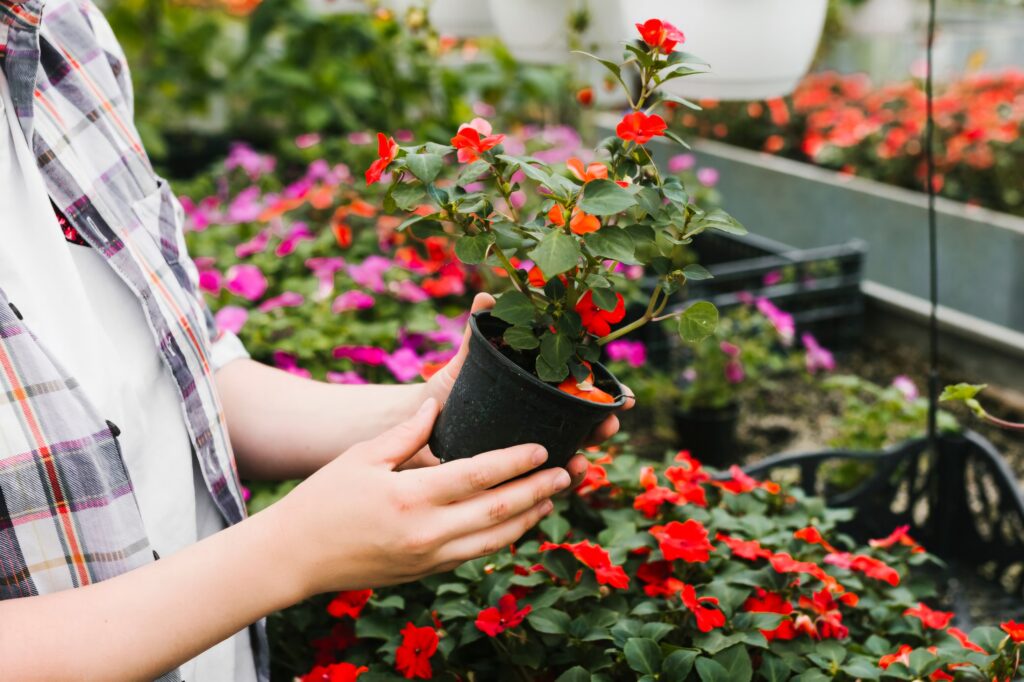
- Seek out plants that require minimal space, such as herbs or small vegetables.
- Choose low-maintenance plants like succulents or snake plants for easy care and long-lasting greenery.
- Some plants produce a lot even in small spaces, like cherry tomatoes, chillies, etc.
- Examples:
- Herbs: Basil, Mint, Coriander, Oregano, etc.
- Veggies: Spinach, Methi, Radish, okra, brinjal, etc.
- Flowers: Marigold, Jasmine, Rose’s, Hibiscus, etc.
- Ornamental Plants: Peace Lily, Snake Plant, Spider Plant, etc.
Types of Small Space Gardens
Container Garden
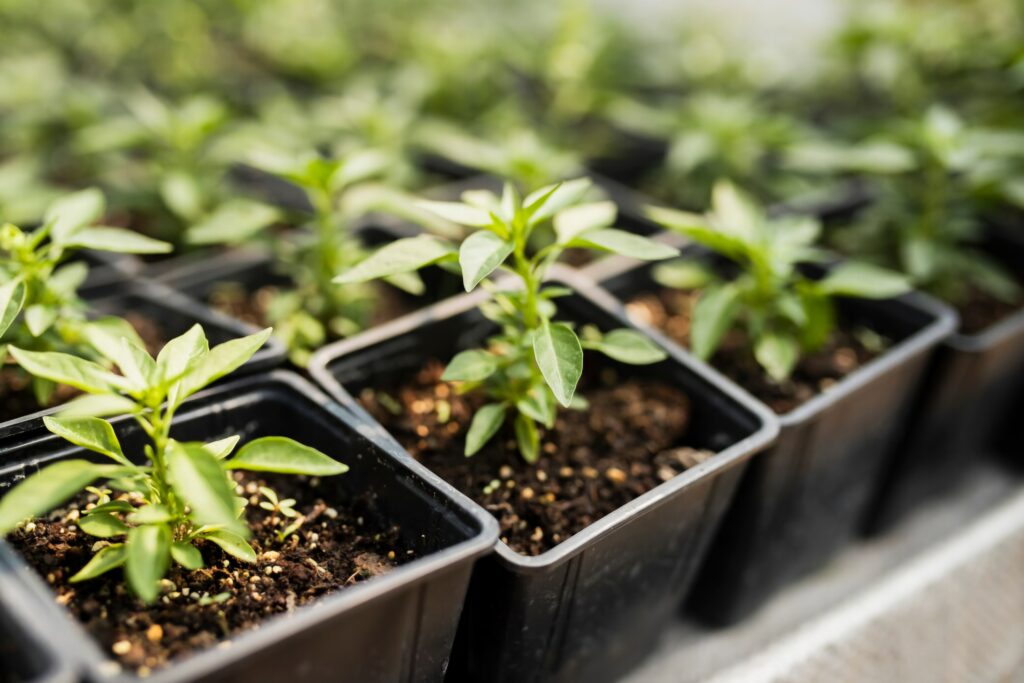
- Grow plants in pots, tubs, or even old cans. Just make sure they have drainage holes so water doesn’t stay trapped.
- Pots can be made of ceramic, plastic, or even fabric-grown bags.
Vertical Garden
- Hang plants on walls using vertical racks or planters.
- Use trellises for plants like beans or decorative vines.
- Fabric pockets that can be hung on walls and filled with soil for growing herbs or flowers.
Hanging Garden
- Hanging Baskets are great for plants that trail, like ferns or strawberries.
- Hang planters from the ceiling hooks to save floor space.
- Macrame Hangers are a stylish option for hanging plants indoors. (A macrame wall hanging is created by intertwining cords, knots, and fibers. These woven tapestry wall hangings bring vibrancy to plain walls, turning them into a tactile piece of art.)
Window Boxes and Balcony Railings
- Window boxes are perfect for growing herbs, flowers, or small vegetables.
- Balcony railing planters fit over railings and are great for flowers or trailing plants.
Indoor Gardening
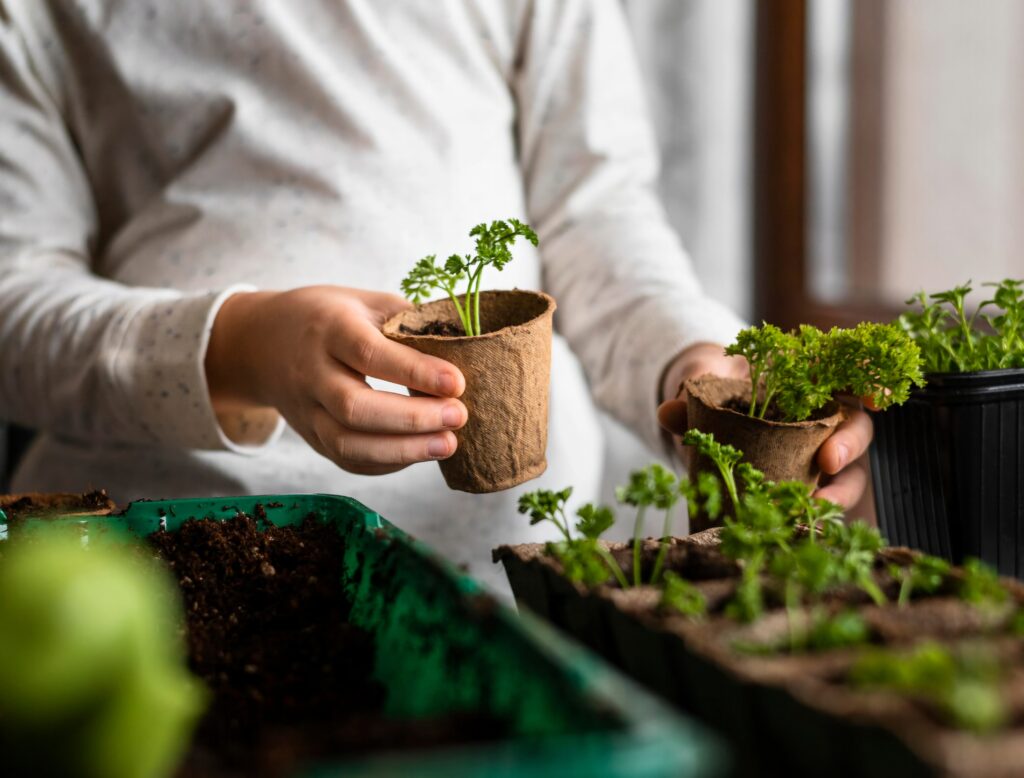
- Terrariums: Small glass containers for growing succulents or cacti.
- Hydroponics: Growing plants without soil, using water with nutrients.
- Aquaponics: Combining fish farming and plant growing, which is space-efficient but needs more care.
Making the Most of Your Space
- Companion Planting: Grow plants together that help each other, such as basil with tomatoes.
- Layering Plants: Place taller plants at the back and shorter ones in front to use vertical space.
- Staggered Planting: Plant in stages so you can continuously harvest in a small area.
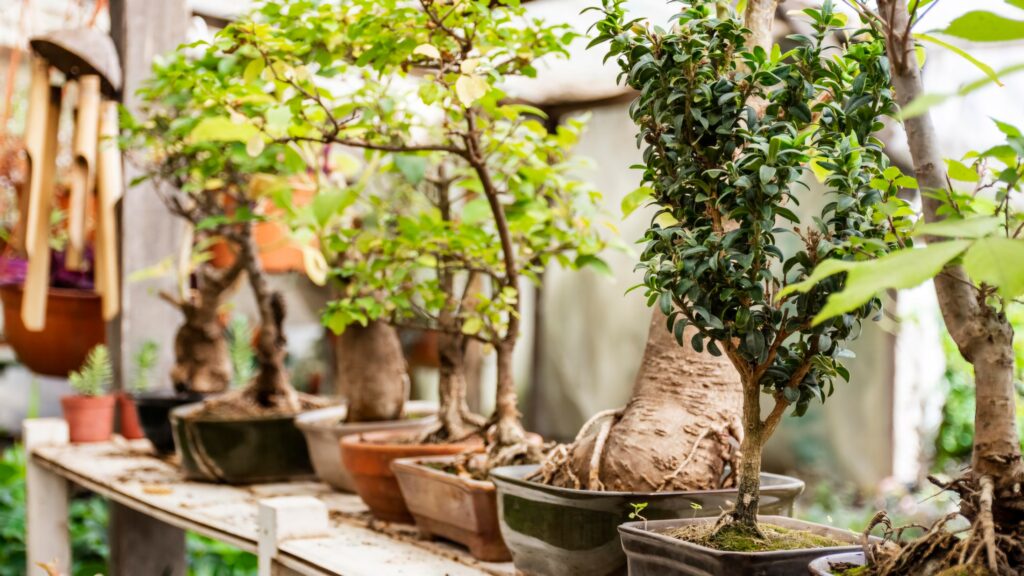
Soil and Fertilizers
Soil Mix
Light and Nutrient-Rich: Utilize a combination of garden soil, compost, and coco peat to maintain soil that is both lightweight and rich in nutrients.
Fertilizing
- Organic Options: Use compost, vermicompost, or homemade fertilizers like crushed eggshells.
- Liquid Fertilizers: Apply seaweed extract or compost tea to feed plants regularly.
Watering Tips
Watering Frequency
It is advisable to maintain soil moisture at a consistent level without over-watering. Utilizing mulch aids in the retention of moisture and serves to reduce the frequency of necessary watering.
Efficient Watering
- Drip Irrigation: Delivers water directly to plant roots, saving water.
- Self-Watering Pots: These pots have reservoirs that slowly release water.
- Water Retention Crystals: Mix these in the soil to help retain moisture.
Managing Light
Check Your Light Levels
- Direct sunlight: 6+ hours is great for most vegetables and flowers.
- Partial Shade: 3-6 hours is suitable for leafy greens.
- Low Light: Less than 3 hours is good for indoor plants like ferns.
Using Grow Lights
- Supplement Natural Light: Consider using LED or fluorescent grow lights in areas with limited natural light.
- Positioning: Position your grow lights near your plants, ensuring they do not induce heat stress.
Dealing with Pests
Common Pests
It is important to be mindful of the presence of pests such as aphids, spider mites, and whiteflies. These common pests have the potential to inflict harm upon plants and should be carefully monitored for effective pest management.
Natural Pest Control
- Neem Oil: A natural remedy for many pests.
- Companion Plants: Some plants, like marigolds can help repel pests.
- Regular Checks: Inspect plants often and remove pests by hand when possible.
- Using Barriers: Protect plants with nets or covers to keep pests away.
Maintaining Your Small Garden
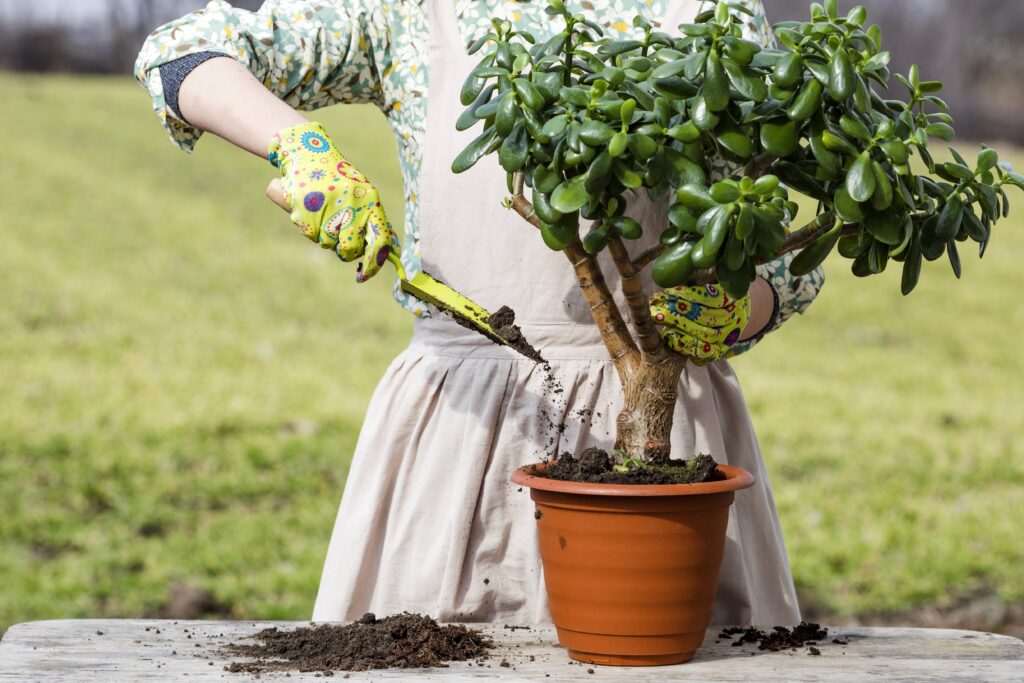
- Pruning: Trim dead or damaged leaves regularly to keep plants healthy.
- Rotating Plants: Ensure your plants thrive by moving containers to maximize sunlight and prevent soil exhaustion in one spot.
- Cleaning Containers: Remember to wash the pots regularly to prevent the buildup of algae and to avoid potential diseases.
Overcoming Common Challenges
- Overwatering: Signs of over-watering include yellow leaves and root rot. To fix, water less frequently and ensure proper drainage.
- Limited Sunlight: Use reflective surfaces, place plants where they can get the most light, and use shade-tolerant plants.
- Space Issues: Use vertical gardening techniques, staggered planting, and multifunctional containers to make the most of your space.
Enjoying Home Gardening
- Start Small: Begin with a few plants and see how they do. Home gardening is rewarding, and even in small spaces, you can create a beautiful and productive garden.
- Final Tips: Choose the right plants, make use of all available space, and most importantly, enjoy the process of nurturing your green space.
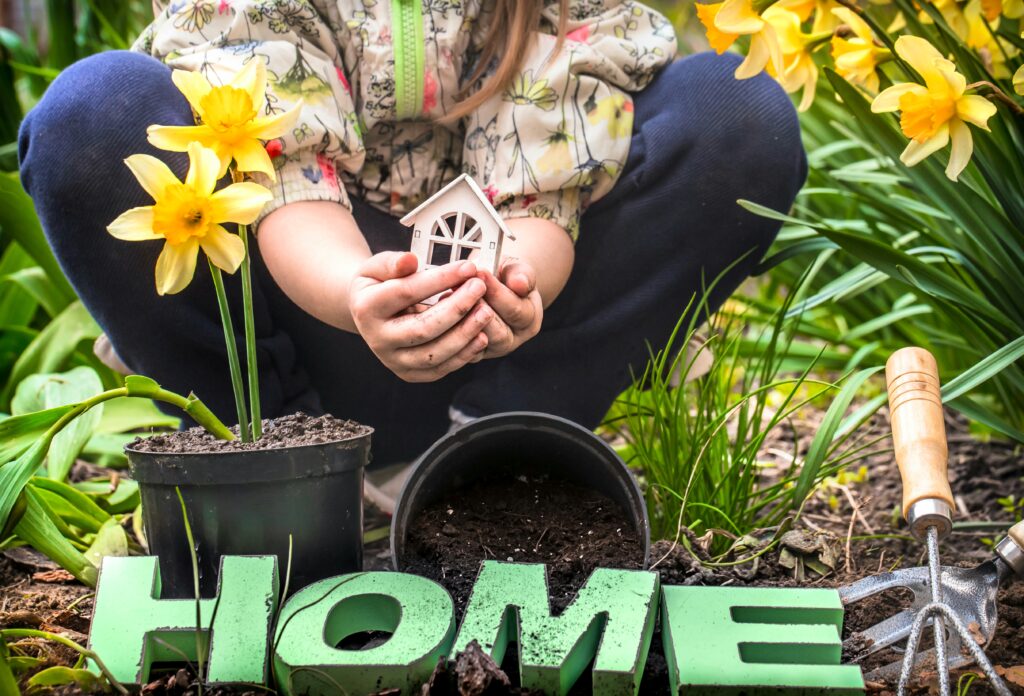
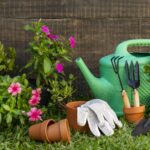
Pingback: Low-maintenance plants that thrive indoors: Best for Beginners - Welcome to Organic Kokan
Pingback: Guide to Creating a Vertical Garden in Limited Spaces - Organic Kokan
Pingback: How to Build a Kitchen Garden for Fresh, Homegrown Produce - Organic Kokan
Pingback: Top 10 Indoor Plants for Indian Apartments - Organic Kokan
Pingback: How to Grow Tomatoes on Your Balcony - Organic Kokan
Pingback: Gardening and Mental Health Connection - Organic Kokan
Pingback: How to Use Apple Cider Vinegar in Gardening - Organic Kokan
Pingback: Medicinal Plants You Should Grow at Home - Organic Kokan
Pingback: How to care for and grow a thriving String of Pearls plant indoors - Organic Kokan
Pingback: Outdoor Gardening Hacks You Need to Know - Organic Kokan
Pingback: Quick Tips for an Ideal Soil Mix for Gardening - Organic Kokan
Pingback: Latest Home Gardening Trends to Try This Season - Organic Kokan
Pingback: Fine Gardening for Busy People with Big Dreams - Organic Kokan
Pingback: Guidelines for Achieving Bright Indirect Light for Your Houseplants - Organic Kokan
Pingback: Seasonal Planting Tips: A Practical Gardening Guide - Organic Kokan